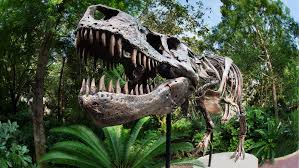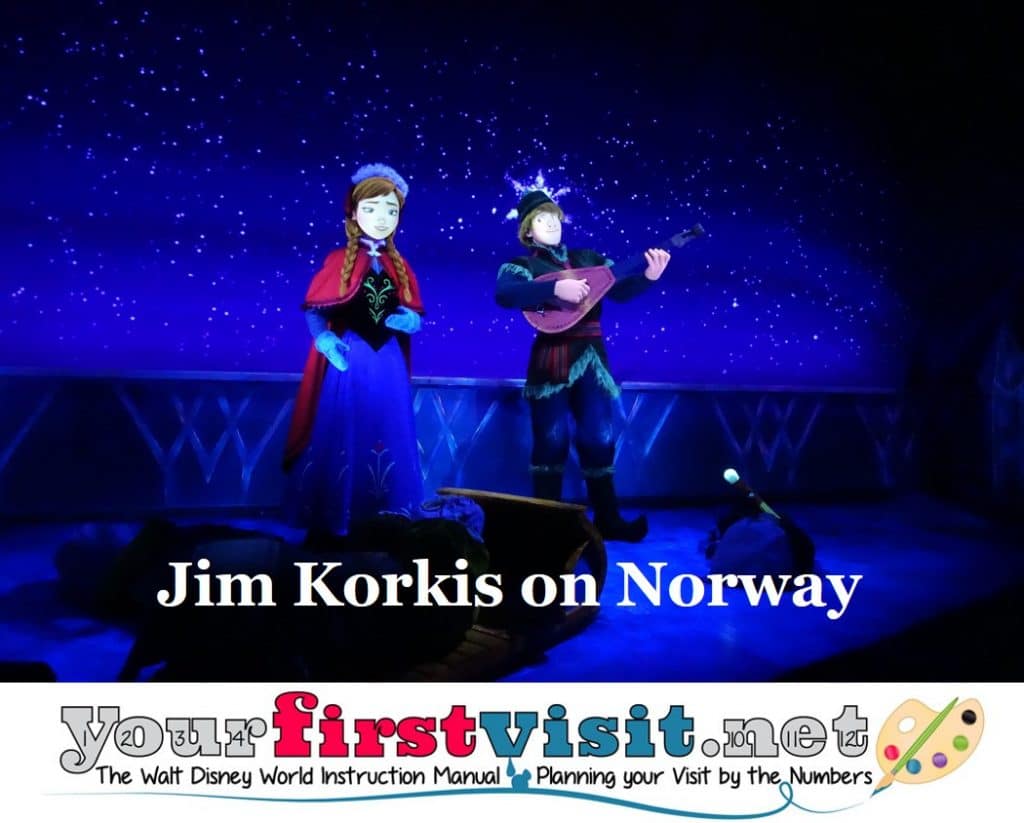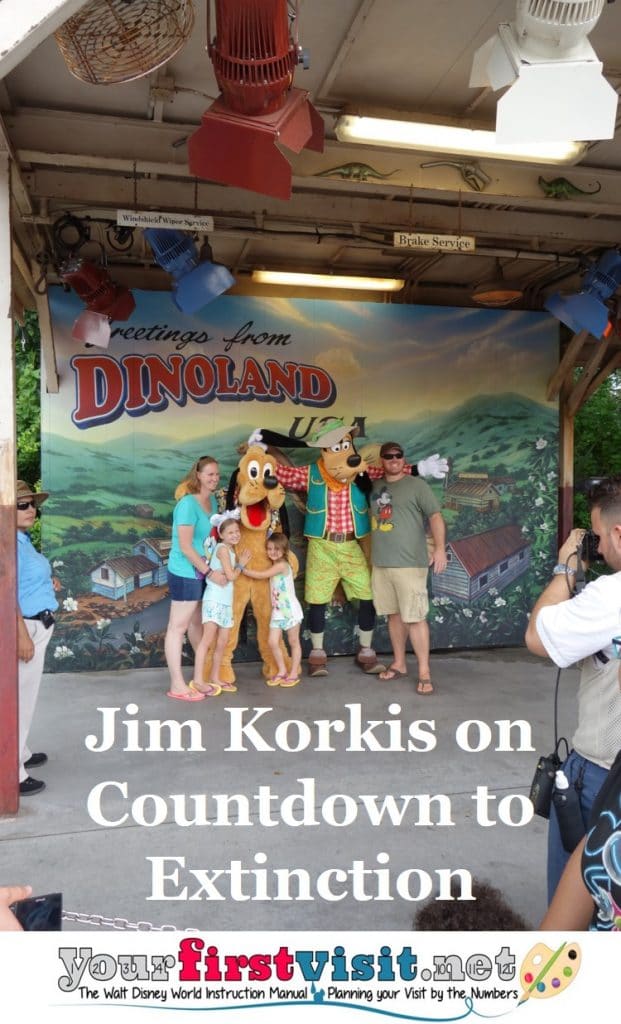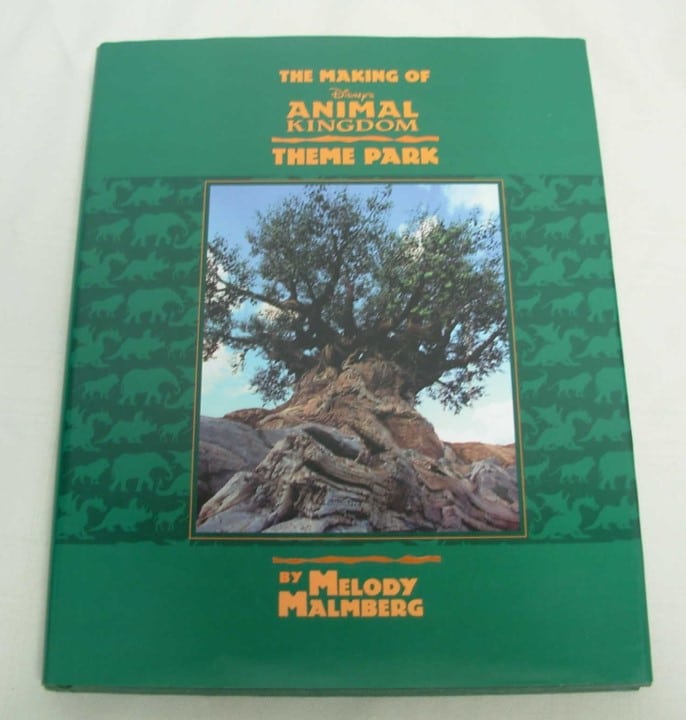Category — A Friday Visit with Jim Korkis
A Friday Visit with Jim Korkis: Walt Disney World Hacks
Welcome back to Fridays with Jim Korkis! Jim, the dean of Disney historians, writes about Walt Disney World history every Friday on yourfirstvisit.net.
YOUR PERSONAL DISNEY LIBRARY (30)
By Jim Korkis
- Walt Disney World Hacks: 350+ Park Secrets for Making the Most of Your Walt Disney World Vacation by Susan Veness
As Walt Disney World re-opens, the experience will be significantly different than it once was. Those of us who have visited WDW multiple times over the decades have learned certain “tricks” of what to do and what not to do that make the time spent there easier and more enjoyable.
Those “tricks” or “hacks” may no longer work immediately, although some things will remain the same and some things will slowly return to the familiar routine over time. When that happens, this book will still remain helpful even though some of the things may not relate to your particular situation.
It has been quite some time since I have accompanied young children into a park so those “hacks” were meaningless to me other than an opportunity to perhaps share them with friends who have children.
One of the things I especially enjoy about this book is that the “hacks” are not illegal, do not put other guests at a disadvantage, and demonstrate a good deal of common sense. One of the other things I like is that the book is well-organized so that the information is not lost in a clump of text, so it is easy to locate that one thing you may want to find and there is a good index in the back of the book.
While the subtitle of the book claims over 350 “park secrets”, there are actually 429 items each divided into short paragraphs and it may be stretching things a bit to consider most of those things “secrets”. An advantage is that some of the items are identified specifically for new visitors to the vacation destination and some are identified for the seasoned pro who is the Disney expert for their friends and family.
Despite my supposed expertise, there were things I had not known or never thought about like one way to avoid having your melting Mickey Premium Ice Cream Bar drip down onto your hand or how to get an autograph from Lady and the Tramp. Sometimes I would read an item and just nod my head as it was something I already use which means that it is something that works consistently.
I was especially impressed with the many references throughout the book to the various ways of thanking cast members including the often forgotten custodial staff. As my dad always told me, “Be kind to everyone because you have no idea what they might be going through” and we often forget some of those visible cast members who are so important in making the magic memorable.
The book is the work of Susan Veness, who is described as “an international travel writer, researcher, online content provider, and itinerary planner specializing in Florida, Disney, Orlando’s theme parks, and cruising.
“She is the author of four books in The Hidden Magic of Walt Disney World series, and coauthor of The Brit Guide to Orlando. She has been visiting Walt Disney World since it opened in 1971 and with a home just minutes from the Mouse she continues to tour the parks on a regular basis.”
For regular readers of Dave’s website, many of the items in the book will already be known and probably already used. However, there are enough other “hacks” that may be unknown that make the book a possible purchase. In some cases, it may be a nice reminder of things that have been forgotten to use. If you buy it with adjusted expectations, I think you will enjoy it.
* * * * *
Thanks, Jim! And come back next Friday for more from Jim Korkis!
In the meantime, check out his books, including his latest, Disney Never Lands, and about planned but unbuilt concepts, and Secret Stories of Walt Disney World: Things You Never You Never Knew, which reprints much material first written for this site, all published by Theme Park Press.
Follow yourfirstvisit.net on Facebook or Twitter or Pinterest!!
August 2, 2020 No Comments
A Friday Visit with Jim Korkis: Dinosaur Jubilee
Welcome back to Fridays with Jim Korkis! Jim, the dean of Disney historians, writes about Walt Disney World history every Friday on yourfirstvisit.net.
DINOSAUR JUBILEE
By Jim Korkis
DinoLand U.S.A. was supposed to feature a roller coaster similar to Big Thunder Mountain called The Excavator, referencing a left over piece of equipment in a sand and gravel pit.
The Excavator was meant to look like a series of ore cars used to haul up the sand and gravel from the bottom of the pit to dump trucks. The paleontology students who were working in the area had reconfigured the unsafe device that had fallen into disrepair to transport the dinosaur fossils they were finding.
The marketing publicity described it as “a rollicking coaster ride through a section of the dig supposedly too dangerous to enter”. At one point, the ride would have zoomed through the inside of a dinosaur skeleton.
It appeared clearly on the original concept painting of the area. However, it was felt that the Countdown to Extinction (now DINOSAUR) attraction since it re-used existing technology would be easier and less expensive to build, yet still attract guests wanting a thrill ride. So no Excavator.
Added was Dinosaur Jubilee, a quickly produced and relatively inexpensive addition to provide an additional experience for guests. It looked temporary and sparse but it was also one of the few attractions at Disney’s Animal Kingdom that had air conditioning. It disappeared in early spring 2001 to be replaced by Chester and Hester’s Dino-rama.
On Dinosaur Jubilee, the guide map stated, “Meander through dino artifacts – see casts of spectacular real dinosaur skeletons!”
It was located in a large white plastic tent around the corner from the Cretaceous Trail, opposite of Chester and Hester’s shop. It was a museum-like exhibit of fossils and skeleton casts that supposedly represented some of the fictitious Dino Institute’s findings in the area.
In addition, comical guided tours of the displays four times a day by some of the Institute’s grad student interns were offered for about the first year.
The displays, featuring casts supplied by the Black Hills Institute and Triebold Paleontolgoy, included among other prehistoric animals one of the most complete Tyrannosaurs Rex skeletons in existence at the time, two triceratops, a Edmontosaurus, a Pachycephalosaurus, two Tylosaurus with a Pterandon in one of its jaws, and an Archelon.
There was even an elaborate area devoted to the Ice Age. The full skeletons were positioned in poses similiar to what might be found at a Natural History museum, and there were ferns and other plants from the era mixed in with the models.
In 2000, the name of the attraction changed to Dinosaur Jubilee 2000 in honor of the milleunium. The exhibit added some interactive versions of an audio-animatronics mammoth and a sabre tooth tiger. These creatures were not skeletons, but covered with fur.
As a precursor to the forthcoming Chester & Hester’s Dino-Rama, a series of simple carnival style games were setup outside of the Dinosaur Jubilee area.
A giant, rather tacky looking, purple inflatable T-Rex as well a banner at the entrance to Dinoland were put in place to direct more guests to the Jubilee. The background story to explain these new additions was that the Dino Institute grad students were putting on a carnival in order to raise money.
In December 2000, the exhibit was themed to Christmas with a huge Santa hat on the T-rex skeleton and large candy canes in the Ice Age section.
Dinosaur Jubilee and the Fossil Preparation Lab that also disappeared are still featured on a hand-drawn map of DinoLand featured on one of the bulletin boards in the area. The Triceratops head from the exhibit ended up at the Wilderness Explorers.
* * * * *
Thanks, Jim! And come back next Friday for more from Jim Korkis!
In the meantime, check out his books, including his latest, Disney Never Lands, and about planned but unbuilt concepts, and Secret Stories of Walt Disney World: Things You Never You Never Knew, which reprints much material first written for this site, all published by Theme Park Press.
Follow yourfirstvisit.net on Facebook or Twitter or Pinterest!!
July 24, 2020 No Comments
A Friday Visit with Jim Korkis: The Fossil Preparation Lab at Disney’s Animal Kingdom
Welcome back to Fridays with Jim Korkis! Jim, the dean of Disney historians, writes about Walt Disney World history every Friday on yourfirstvisit.net.
THE FOSSIL PREPARATION LAB
By Jim Korkis
Dino-Sue was named after paleontologist Sue Hendrickson, who found a remarkable skeleton in 1990 at the Cheyenne River Indian Reservation in western South Dakota. Never before had such a complete Tyrannosaurus rex skeleton been unearthed, with about 90 percent of the 350 bones intact.
The original Sue lived during the Late Cretaceous Period, in the Mesozoic Era. She weighed several tons, and her skeleton is a whopping 40 feet long and 13 feet tall, making her the largest Tyrannosaurus rex skeleton ever discovered.
In October 1997, the Chicago Field Museum paid a record $8.4 million for the prehistoric treasure at auction, helped by donations from Walt Disney World, McDonald’s and the California State University system.
Rushing to finish the skeleton for a big millennium exhibit, the Chicago Field Museum had seven people working full time on the bones, including as part of the deal for Disney’s and McDonald’s contributions having three scientists headed by paleontologist Bruce Schumacher who worked on it in the Fossil Preparation Lab in DinoLand.
Millions of visitors observed the preparation of Sue’s bones through glass windows in both labs. The Disney’s Animal Kingdom team (like one in Chicago at the Field Museum) carefully removed the South Dakota rock in which the bones were fossilized 67 million years ago, doing the work behind glass in a public viewing area in the temporary structure.
Every day, a paleontologist worked cleaning, cataloguing and photographing a genuine fossilized dinosaur bone, while a couple of cameras with monitors showed a close up view of the work being undertaken.
“People sometimes have a hard time realizing that these are real bones,” Schumacher said. “We try to go out and talk to people at different times during the day, and sometimes we find that they think we’re just actors pretending to work, on a set made to look like a science lab because it is at Disney.”
Guests could watch through the glass windows, read colorful displays, and ask questions of a Disney attendant stationed outside. In addition, the lab had the sounds of a dinosaur roaring piped in periodically over the loudspeaker. The paleontologists heard it hundreds of a time a day, and would joke that it sounded more like a big toilet flushing than a dinosaur.
The work was tedious. Once cleaned, fragments of the bones were glued together. Any cracks in the bones were filled with industrial-strength Krazy Glue to hold them together and prevent more crumbling. Gaps or missing bones were molded from clay.
In addition, they made molds of the bones so that three replicas could be created. In 1999, the bones were loaded into crates and shipped back to Chicago the same way they arrived: by a special moving company that uses air-conditioned, climate-controlled trucks, the kind used to move fine art. Security guards accompanied the bones. The Fossil Preparation Lab was closed.

(c) Disney
Two of the replicas went on a national tour sponsored by McDonald’s, visiting over 18 U.S. cities beginning in July 2000. The third replica now stands outdoors in DinoLand U.S.A. near the entrance to the Dinosaur attraction.
“This is a chance to have the real thing in DinoLand,” said Bob Lamb, Animal Kingdom’s vice president at the time. “I don’t see us doing a huge promotion about us working on this dinosaur. Sue will become one of the things you discover in the park.”
By the way, the 90-foot Brachiosaurus skeleton that stretches over Dinoland’s entrance was cast from the mold of the same skeleton that arches over Stanley Field Hall in the Field Museum.
* * * * *
Thanks, Jim! And come back next Friday for more from Jim Korkis!
In the meantime, check out his books, including his latest, Disney Never Lands, and about planned but unbuilt concepts, and Secret Stories of Walt Disney World: Things You Never You Never Knew, which reprints much material first written for this site, all published by Theme Park Press.
July 17, 2020 No Comments
A Friday Visit with Jim Korkis: Norway in Epcot’s World Showcase
Welcome back to Fridays with Jim Korkis! Jim, the dean of Disney historians, writes about Walt Disney World history every Friday on yourfirstvisit.net.
NORWAY IN EPCOT’S WORLD SHOWCASE
By Jim Korkis
The Norway Pavilion was the 11th and last (so far) country added to Epcot’s World Showcase–in 1988. Norwegian Showcase (NorShow) was a consortium of eleven companies established to pay for the pavilion and represent Norwegian interests. The Norwegian government also helped pay for the pavilion.
Disney Imagineers first proposed an attraction called SeaVenture, where guests would ride along a 946-foot water flume and encounter trolls, gnomes, and the legends about them, with a theme song written by the Sherman Brothers. Another proposal was Vikings on their way on the Rainbow Bridge to Valhalla.

Attraction Designer Bob Kurzweil came up with the new approach that it would be a time-travel experience through the history of Norway to give guests the experience that “those who seek the spirit of Norway face peril and adventure, but more often find beauty and charm.”
Disney Imagineer Randy Bright stated, “It’s the first ride that actually goes backwards, and the first ride that will utilize Audio-Animatronics in a black light environment.”
An Epcot press release at the time described the attraction as “Visitors take a fantasy voyage that departs a modern-day village on a Norwegian fjord and journeys up a cascading waterway into the Norway of old. The trip is aboard small ships patterned after the dragon-headed craft of Eric the Red and his fellow explorers.”
The boats were some of the first concept art work done by Imagineer Joe Rohde for Walt Disney World. It was also some of the last work done by famed Imagineer Jack Ferges, who built the model for the ride vehicle ship, and also sculpted the polar bear maquettes.
Originally, the polar bear (who stood 11 feet tall) scene was going to feature extensive rockwork but, to cut costs, most of it was replaced with black-light painted flats.
Adding to the attraction’s appeal would be various drops including one of twenty-eight feet, and visual effects, as well as a unique directional change with the ride vehicle briefly going outside over a waterfall and then return into the attraction and go backward. The new designs also called for a full-scale replication of a North Sea storm to include wind, waves, rain, thunder, and lightning.
Over the years, there were a few minor changes made to the attraction. The smoke effects in both the Troll scene and the reverse scene were toned down. The wave and rain effects in the North Sea Storm scene were also muted, and the Tesla coil that originally created the lightning effect over the oil rig was replaced with strobe lights.
At the end of the boat ride was a theater showing a six-minute film entitled The Spirit of Norway, directed by Paul Gerber, about the beauty of present day Norway. In later years, guests often walked straight through the theater rather than watching the outdated film.
In the first full year of operations nearly 5.7 million guests rode the Maelstrom attraction.
NorShow sold back its interest in the pavilion to Disney in 1992 for $26 million, a loss of more than $8 million on its initial investment of close to $34 million. In September 2014, Disney announced that the attraction would be replaced with a new attraction based on the animated feature Frozen (2013) that would immerse guests in favorite moments from that film.
* * * * *
Thanks, Jim! And come back next Friday for more from Jim Korkis!
In the meantime, check out his books, including his latest, Disney Never Lands, and about planned but unbuilt concepts, and Secret Stories of Walt Disney World: Things You Never You Never Knew, which reprints much material first written for this site, all published by Theme Park Press.
Follow yourfirstvisit.net on Facebook or Twitter or Pinterest!!
July 10, 2020 No Comments
A Friday Visit with Jim Korkis: Countdown to Extinction
Welcome back to Fridays with Jim Korkis! Jim, the dean of Disney historians, writes about Walt Disney World history every Friday on yourfirstvisit.net.
COUNTDOWN TO EXTINCTION AT DISNEY’S ANIMAL KINGDOM
By Jim Korkis
When CEO Michael Eisner had to make the decision whether to build Beastly Kingdom or DinoLand U.S.A. at Disney’s Animal Kingdom, several things influenced his decision besides his interest in dinosaurs.

The Imagineers pitched a thrill ride that would also prominently feature those two dinosaurs so it would tie in with promoting the film. It would also utilize the EMV (Enchanced Motor Vehicle) ride system developed for Disneyland’s Indiana Jones Adventure attraction and a nearly identical track layout, so it would save construction money as the park was going way over budget.
The backstory of this was that the Dino Institute was struggling for funds, so hired Dr. Helen Marsh, who had a reputation for fund-raising for museums. Within days of her arrival, she purchased Chrono-Teck Inc. and announced they had developed a CTX (to reference Countdown to Extinction attraction name) Time Rover vehicle that could travel back in time.
This invention brought the Institute prestige and funding to build a state-of-the-art facility to assist in research and house classrooms. The “new” version of the Dino Institute was dedicated on April 22, 1978 (to reference the opening of DAK on the same date in 1998).
Dr. Marsh insisted that tours to the Cretaceous period be offered to non-professionals to help subsidize the costs of the new facility. Controller Dr. Grant Seeker informs the visitors that he intends to use the time rover to save an Iguanodon from extinction and bring it back to the Dino Institute.
Once aboard the Time Rover, riders begin a turbulent journey back to a prehistoric jungle where they encounter several dinosaurs, including a styracosaurus, alioramus, raptor, sauropod, and pterodactyls among others, and are chased by a Carnotaurus before finally rescuing an Iguanodon seconds before an asteroid hits.
Disney expected the movie Dinosaur to become another classic and attract families with younger children so significant changes were made to the attraction.
Two weeks before the movie was released, the attraction was renamed Dinosaur.
Outside of the Dino Institute, the styracosaurus standing in an infinity pool was replaced with an iguanodon in a garden and footage from the film was inserted into the pre-show.
The first time warp tunnel (where the Time Rover is “sent back into the past”) no longer used the lasers and pyro effects to blind guests. The compsognathus that jumped over the Time Rover were on a chain and pulley system and were deactivated so they just hovered in place (and were replaced by projections in 2016).
The ending was changed with a large, static, blacklit, cartoon-proportioned carnotaur head sliding toward guests on a visible rolling rig. Changes were made in the narration to make it more comedic and emphasize more urgency.
The motion of the EMVs were reduced and made less jarring so the height requirement could be lowered for younger children. The audio of the chase by the carnotaur was softened, so instead of getting ever closer, it faded off as if the dinosaur had fallen behind.
These changes did not make the attraction less scary for children, but did make it more disappointing for adults. As a result the original version, despite some similarities to the current version, is considered an entirely different ride experience.
* * * * *
Thanks, Jim! And come back next Friday for more from Jim Korkis!
In the meantime, check out his books, including his latest, Disney Never Lands, and about planned but unbuilt concepts, and Secret Stories of Walt Disney World: Things You Never You Never Knew, which reprints much material first written for this site, all published by Theme Park Press.
Follow yourfirstvisit.net on Facebook or Twitter or Pinterest!!
July 3, 2020 No Comments
A Friday Visit with Jim Korkis: The Making of Disney’s Animal Kingdom Theme Park
YOUR PERSONAL DISNEY LIBRARY (29)
By Jim Korkis
- The Making of Disney’s Animal Kingdom Theme Park by Melody Malmberg
Melody Malmberg was a full-time show writer at Walt Disney Imagineering for six years. This was her first book, but she was uniquely qualified to write about Disney’s Animal Kingdom because she was the wife of Joe Rohde, the Executive Designer of Disney’s Animal Kingdom.
Amusingly, that marital bias may be reflected in the text. Rohde was very upset that his concept for a Beastly Kingdom was cancelled and replaced by the small Camp Minnie-Mickey that allows guests to have meet-and-greet opportunities with the classic Disney animated characters.
So while the book painstakingly explores in great detail the development of every other area in the park, including at the time of writing some yet to come like Asia, it only gives a brief, cursory half page description of Camp Minnie-Mickey that includes a small color concept sketch of Mickey, Donald and Goofy fishing in the river while guests watched.
On the other hand eight pages were devoted to listing in four columns per page in tiny type every WDI team member who worked on the park. It would have been nice to have more information about the concept and challenges of Camp Minnie-Mickey as were shared with other aspects of Disney’s Animal Kingdom, but that is not the case.
The book clearly emphasizes the park’s original focus on real animals (rather than thrill rides), education and conservation. Since its opening in 1998, the new additions to the park have gone in a much different direction as reflected by the inclusion of Expedition Everest and Pandora.
Originally released in May 1998, this 192 page hardcover book is both colorful and informative as it charts the park from the initial concepts to opening day, although the book went to press before the actual opening day ceremonies so that is not included.
While some of the information in the book is now outdated because of all the changes in the last two decades, the historical information is still valid and fascinating. It gives an interesting perspective on why certain choices were made and gives credit to specific people who were primarily responsible for certain things. It is an insightful look into what it takes to build a Disney theme park.
The book is filled with full-color Imagineering concept sketches, caricatures, behind-the scenes photos of Imagineers working on details for the park, personal photos of people involved, beautiful images of animals and locations as well as much more.
There is even a two page detailed look at the forthcoming Tiger Rapids Run that later evolved into the Kali River Rapids attraction. The two pages include six large concept sketches of what it was meant to look like along with a full page description with quotes from Rohde.
The book still continues to sell very well and at a reasonable price because to the best of my knowledge there are only two other books entirely about Disney’s Animal Kingdom: he Imagineering Field Guide to Disney’s Animal Kingdom (2007) by Imagineer Alex Wright and Disney’s Animal Kingdom: An Unofficial History (2018) by Chuck Schmidt that I previously reviewed here.
Malmberg also authored two other Disney related books:The Making of Hong Kong Disneyland: Magic at Work; (Disney Enterprises) and The Making of Hong Kong Disneyland: Magicians at Work; (Disney Enterprises). Good luck trying to find copies of those volumes. I am still looking.
* * * * *
Thanks, Jim! And come back next Friday for more from Jim Korkis!
In the meantime, check out his books, including his latest, Disney Never Lands, and about planned but unbuilt concepts, and Secret Stories of Walt Disney World: Things You Never You Never Knew, which reprints much material first written for this site, all published by Theme Park Press.
Follow yourfirstvisit.net on Facebook or Twitter or Pinterest!!
June 26, 2020 No Comments





